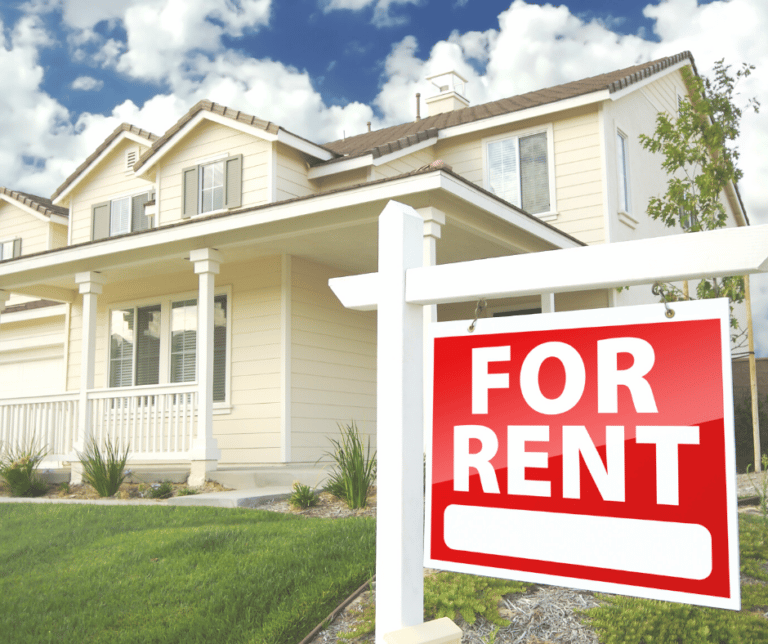Download a pdf version here...
[2024 Update] Two years later, many issues remain—tariffs, weather-related costs, and activism. Corporate landlords now own more rental stock and employ more repair specialists, driving up costs for independent investors.
Some things have come full circle like used car prices and lumber. Though not mentioned in this article, they were once poster children of the COVID housing boom and have since become a cautionary tale for sustainability.
Similarly for rental investors costs rose dramatically into 2023, and have since settled down quite a bit. Still, they are very high. That said, many owners still refuse to adjust rental rates, even as the market slows. Some won’t budge, no matter how clear the cost of vacancy becomes. Surprisingly, the average owner loses as much to vacancy each year as they spend on repairs—a fact that shocked even us while urging owners to adjust to slower demand and higher interest rates.
Read more about this here: https://movezen360.com/property-management-myths-how-to-avoid-them-and-set-the-right-investment-priorities-as-a-landlord/
“Construction costs increased 30% again this year. A fact that is both astounding and unbelievable to developers. While recent tariffs have put pressure on raw materials costs, a shortage in construction labor is the chief driver of the rapid increase in construction prices”
2022 was a remarkable year—and the years ahead are shaping up similarly. With over 15 years in rental management, I’ve seen plenty, but aside from 2008–09, no year has brought as much change. While we’ll explore several angles in our annual recap, this article focuses on one of the most painful shifts: the steep, across-the-board rise in repair costs.
You’ve probably heard about rising construction costs in the media, usually in the context of new builds—but these increases also hit hard on the repair side. In this article, we’ll explore the key drivers, share where we think things are headed, debunk the myth that contractors are eager for high-volume work, examine the impact of politics, and highlight important lessons we learned from Hurricane Florence at our Wilmington location.
As someone who continually handles maintenance items, I’m constantly blown away by the increased materials and labor costs. I mentioned the only more dramatic rental market change I’ve witnessed was in 2008, and of course, that period was the complete opposite. With so many unemployed and once-in-a-lifetime deflation, finding competent people willing to work hard for relatively low pay was like shooting fish in a barrel. To top that off costs were falling across the board. Well, things have changed… I found myself asking “how is it that I was able to handle this job for nearly half the price, and this owner isn’t furious right now?” The answer I realized, is that we don’t have many owners from 2008. Nearly every home that we managed in that period has been sold.
The furious pace at which homes have changed hands means that most of our landlords weren’t able to experience those great opportunities (rents were about 35% lower so don’t get too jealous). The rest have been involved long enough to know that housing costs across the board have been on a relentless march higher. We have recently begun to see major push back though, and that’s what led to this article.
Incrased Rates Are Causing Problems
That is a great segway into the fundamental problem here, and that is inflation. For nearly a decade there was constant talk about a lack of inflation, however that has not been the case in housing since 2009. We were the primary stand out in fact. Since 2009 and typically in dramatic fashion, we have seen increases in purchase prices, rents, insurance, construction costs, and more. Perhaps most importantly are the number of fees being siphoned off from housing. Closing costs are higher, new taxes are in effect, and most importantly interest rates which have literally trended down for the past 30 years have changed direction, and fast. When you siphon off huge amounts of resources you can bet that costs are going to rise, not to mention the clear increase in a higher interest rate mortgage. General economic inflation is just beginning to become a serious concern, and it’s unnerving to think how that may play out in light of what we’ve already experienced. Perhaps since rental investors have been dealing with inflation for 10 years we’ll see some relief in the future, but I wouldn’t bet on it. One thing that would change things is another great recession, but obviously, that’s no solution.

Who’s Affected?
Increased Mortgage Interest Rates affect more than just homeowners.
There is no shortage of media attention on the rising costs of construction. A simple headline scan will quickly make it clear the following are all to blame
Low unemployment – Especially in the construction industry it’s to the point of causing serious issues getting jobs done. Of course, this drives up payrolls but also causes less-skilled workers to be promoted, discourages entrepreneurship which is what delivers most of our preferred local contractors, and many other secondary effects
General raw material cost increases for a host of complex reasons
Tariffs – Many of these, especially the ones that have been in effect the longest disproportionately affect housing/construction, ie steel/appliances
Bigger Competition = Bigger Checks
Inefficiency caused by low-interest rates – When the cost of borrowing is low, and especially when asset values are also high, people will take huge risks to make a small profit. Warren Buffett calls it picking up nickels in front of a bulldozer. The classic symptoms of artificially low borrowing costs are blatantly obvious right now when you know what to look for. Let’s sum it up this way. If you were considering opening a Blockbuster Video franchise and could borrow 100k at 3% with a $2000 payment, that idea would be substantially more enticing than if you had to borrow 100K at 6% with a $3500 payment.
While the perils of this are obvious to all, it’s so subtle in the general economy we often fail to consider it. Case in point, one of our government-chartered (basically) behemoth competitors American Homes for Rent is a 7+-year-old abomination that I believe has never turned a profit. “Profits on the Horizon for American Homes 4 Rent (AMH)“ Somehow they continue to buy up houses that you might have bought thereby driving up prices and costs, consolidating handymen we may have hired to work exclusively for them, and incompetently managing thousands of properties that a company like ours might have efficiently managed.
Pros or Cons
Proptech start-ups vs. independently owned property management – know the difference

I sit in on their conference calls from time to time and it’s shocking how out of touch they are with this industry. I am also convinced their numbers, particularly the vacancy rate is outright fraudulent at nearly 96%. Since their tenants typically dominate the eviction docket it’s really tough to see how that’s possible though I guess an upcoming eviction with 2 months of unpaid rent could still be considered occupied. I say somehow they continue, but that’s tongue in cheek as the how is blatantly obvious, they live off nearly free money as a result of low-interest rates and rental inflation (also caused by low-interest rates).
Scaling up like this usually results in better productivity, but as in this case except when it’s due to nothing other than cheap borrowing costs and subsidies. Lacking profits isn’t necessarily a terrible thing, Amazon went years without a profit after all. Well, I assure you AMH isn’t changing the world, in fact, they’re nothing but a giant parasite and their meal is sub 4.5% interest rates. “But my mortgage rate is 5%,” you say? That’s because they don’t pay the same rates we do, they sell bonds that they can then roll over whenever needed so long as rates are low and investors are willing to take huge risks for nickels. As Warren Buffett said, you see who’s swimming with no trunks when the tide goes out. Interest rates are rising, which will dampen investor appetite, and I guarantee you’ll read about AMH’s bankruptcy within 5 years if it continues, and there are tons of companies just like this in a wide array of housing niches.
Construction Costs And Costly Home Repairs
Rising construction costs can be directly translated to the rental industry and repair costs as well. Vendors who might have worked for us instead go to work for large corporations/apartments leaving fewer, often subpar options for us. Having the promise of a solid backstop gives vendors the confidence & motivation to raise prices. Raw material increases affect everyone, and as mentioned the tariffs have hit homeowners in particular. The profit & loss statement for a construction company is pretty simple for the most part.
Income – Money paid by real estate owners
Minus expenses which pretty much boil down to payroll (skyrocketing), raw material (skyrocketing), insurance (steadily marching higher and already high for our industry), and often financing costs (skyrocketing).
It doesn’t take a degree in calculus to see why we felt the need to address this issue. You might also see how that equation is likely to drive a lot of potential vendors out of entrepreneurship & into the arms of corporate suitors, further exacerbating the problem people like us face.
Home Warranty
They’re more trouble than they’re worth not only for homeowners but tenants too.

“But you are a high-volume work provider, don’t contractors fight for your business?” No, they absolutely do not. Especially in heady times like this where work is plentiful either at the corporate level or even with so many investors massively renovating old homes, would you be surprised to find that many don’t jump at the chance to fix toilets all day every day?
Vendor Availability (Willingness)
That’s just a bit of the problem. Many vendors we call will not even speak to us because they have had so many headaches and huge delays from other managers. Our company pays huge amounts of invoices ourselves each month specifically to avoid asking our prized vendors to go months without pay, but in this business that would otherwise be very necessary. We try hard to use local small outfits because they give us the best prices and service, but financing and administration are not their strong suit. For many going months without a big check means closing up and going to work for GloboCorp Inc. Or perhaps one of the massive apartment REITs that have sprung up everywhere you look. Consequently, our approach to paying vendors so quickly via company funds is a major contributor to lower prices that you don’t see firsthand, but it’s minimal compared to the huge forces at play on the other side. The bottom line is that it is extremely difficult, especially these days, for us to find great handymen/women. In our case, it’s by far the hardest part of the job.
We also must use insured, reliable, and consistent vendors. Owners often point out that their buddy had the same job done for 30% less. Well, if that vendor wasn’t insured that pretty much accounts for the 30% savings right there, as insurance in this industry is a major cost. Of course, if they make a mistake you can sue them (rarely an effective solution anyway) but they’ll already have dissolved their company and gone to work for GloboCorp, and you’ll be footing a huge bill. Many cheap contractors are good sometimes, but inconsistent to the point a legitimate company like ours obviously could never use them. They also have to keep appointments, and not alienate good tenants.
Bottom line, finding good, reasonably priced vendors to do the thankless tasks that dominate our workload is extremely difficult. With that said, we can and will do better. This year came fast and furious and our top priority for 2023 will be normalizing costs as best as possible. We’re even seriously weighing the merits of an in-house repair staff. This is no panacea as we’d have been in a lot of trouble after hurricane Florence if that was our only option, and the concern for conflicts of interest arises then as well. These challenges can be minimized though, and in general, we’re weighing a lot of options.
Should I Use A Property Manager?
There’s a lot that goes into managing rental properties.

HVAC Repair Costs
One other issue is the new regulations regarding HVAC freon. The former chemical is no longer manufactured and the new chemical will not work in old systems. This was known well in advance so huge amounts have been stockpiled, but storage has a cost also and as supplies are depleted the costs keep rising. Since freon leaks are the single most common repair that we deal with, it’s a major issue to say the least. Freon has never been cheap, but now the fix / replace question is harder than ever. Or, in my opinion perhaps easier than ever as continuing to refill a badly leaking system is simply paying a huge amount to delay the inevitable. Even a leak search to determine severity is $300+, so when in doubt you might as well take the leap. In years past repairing a rough system was a viable option, now it rarely is and that means $5K+ investments are becoming commonplace. If you haven’t upgraded yet, get ready. “But I got my last HVAC for $3500!” you say? Welcome to inflation… We haven’t seen a full install for that price in 5+ years.
Brutal Conditions Means Higher Repair Costs
Hurricane Florence wasn’t our first major storm experience, but it was dramatically worse than all others. We discussed those challenges in a previous update sent to Wilmington-area owners. While property damage was a concern, the real issue was infrastructure collapse. It quickly became clear how easily recovery can stall, prices can spike—even with good intentions—and how chaotic behavior can emerge, even from usually steady people.
We saw trusted vendors deliver poor-quality work at high prices (and no, storm pricing isn’t as simple as people think), good tenants became unreasonable, and many people started acting like the world owed them a payout. Something as basic as tenants updating us on when they’d return home was often ignored—an incredibly frustrating situation during a critical time.
Everything Became More Difficult and More Expensive
Just days after explaining how brutal the conditions were, we were getting owner calls about minor charges. “I understand your question about a $30 expense, but I’m standing in three feet of water and being swarmed by mosquitoes…” That’s not an exaggeration—it’s the reality we faced. Everything was hard: charging phones, accessing the internet, printing, driving, even finding food or fuel.
Prices skyrocketed—not due to gouging, but basic supply and demand. We were lucky to house vendors at all, and when we could, it cost $200 a night. Supplies vanished instantly, and higher prices became unavoidable. We kept a close eye on everything, but in the end, brutal conditions meant higher prices.
Increased Risk = Higher Cost
Storm recovery isn’t just expensive—it’s dangerous. Power lines were down, flooding was widespread, and access to essentials like medicine was limited. Wildlife and contaminated water made infections a serious risk. I was personally reminded of Hurricane Fran, when a tractor bucket fell on my back—luckily, without lasting injury. When lives are on the line, people will charge more. It’s just common sense.
This isn’t exaggeration—many people died in the weeks following Florence from infections, flooding, and related causes. In fact, Florence took more lives than the Category 4 storm that hit Florida just weeks later.
Key Lessons from Florence
The biggest takeaway? Don’t expect people to stay level-headed during a crisis. You need backup plans—and nerves of steel. The worse things get, the less reliable people become. Past experience is no guarantee of future behavior, and even small issues can spiral quickly.
Infrastructure failure is the real problem in the immediate aftermath—not just property damage. Costs rise fast and in unexpected ways, and you can’t count on the usual systems to function.
Post-Storm Rent Surge and Market Impacts
Rents always rise after major storms. Even a month and a half later, inventory was nearly gone, pushing prices higher. While we refused to gouge storm victims, we did stick with our long-time pricing strategy: list 10–15% above our target and reduce systematically.
This time, reductions haven’t been needed. Research shows rent remains elevated for at least a year after storms like Florence. That helps landlords recover costs, but it puts even more strain on renters—potentially leading to higher crime or lower quality of life.
That said, we may now be entering a lull. Most displaced residents have found housing or returned home, inventory is increasing, and demand may cool temporarily.
Looking Ahead: Some Silver Linings
The good news? These challenges aren’t new. We may have already absorbed the worst of the inflation, and things could stabilize soon—though that’s less likely in other parts of the economy.
As we noted in our annual update, rental properties remain one of the safest long-term investments—especially if you’re prepared for the occasional major expense like an HVAC replacement. Rising interest rates and general inflation are two of the biggest non-political threats we face, and few investments are better positioned to weather them than real estate.
Higher interest rates make homeownership harder—bad news for buyers, but good for landlords. And while repair costs have risen over the past five years, rents have increased even more—often by 5–10 times the rate. So yes, inflation hurts on the expense side, but it also boosts the income side, often even more.












